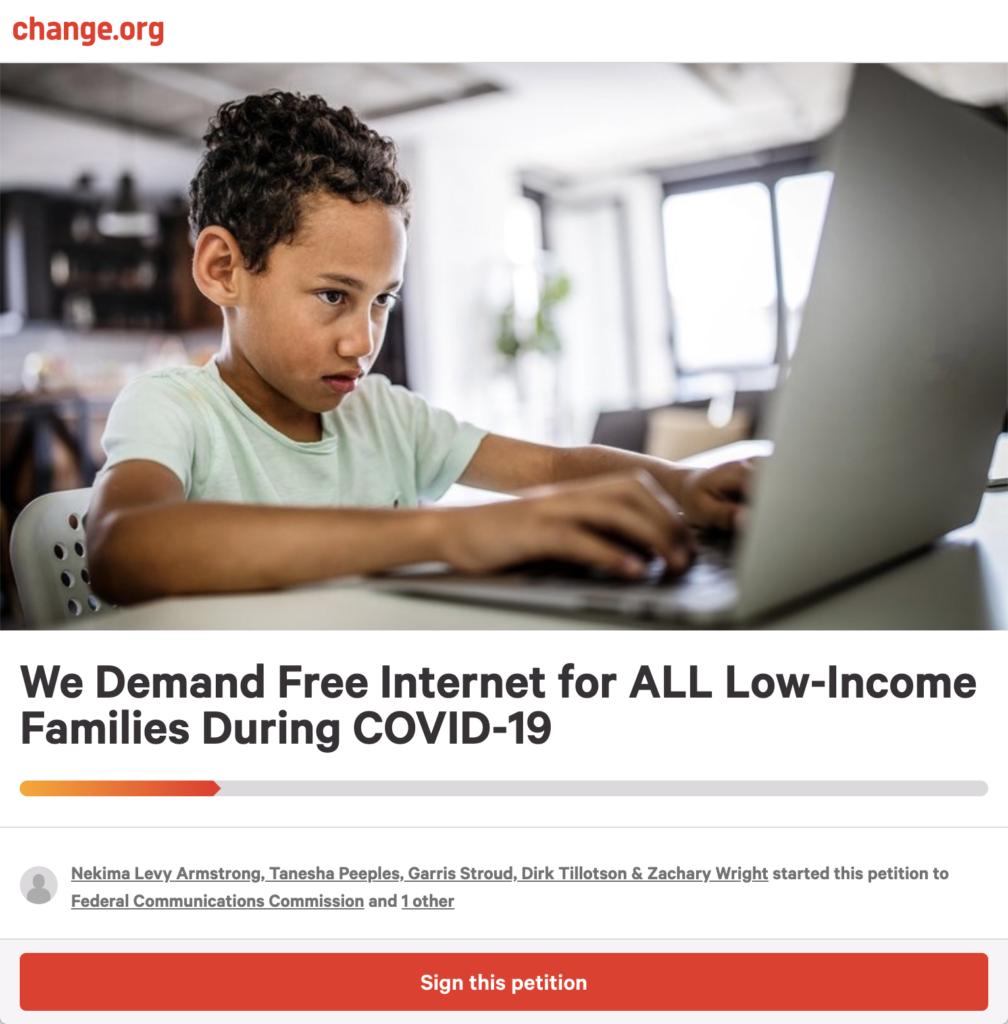School closures due to the novel coronavirus disease (COVID-19) have shined a light on inequality in virtually all facets of life from food, to childcare, to even transportation. But in addition to these areas, there’s perhaps a more hidden inequity that exists—families access to technology and home internet.
Around 18% of students don’t have access to broadband internet and 17% don’t have access to a computer period. As one would probably guess those numbers largely reflect low-income families. Moreover, schools are finding out that oftentimes students that do self-report having “access” to the internet have sporadic access that doesn’t actually allow them to complete schoolwork consistently. For example, students that have access at mom’s house but not dad’s house or access via a smartphone or wireless hotspot with finite data plans.
Schools in the midst of the COVID-19 pandemic are shifting to an “E-Learning” model. Obviously shifting schoolwork online leaves students without internet access out of the equation.
This reality has many observers and advocates claiming that low-income families should be given free internet access during the COVID-19 pandemic. Those people are right.

In the United States, education is a right. Actually, it’s compulsory…kids HAVE to go to school. So, let’s do the math: If in the United States all students have a right to free public education and that education moves online then what does that mean has to be true about internet access? The answer is that it has to be free as well.
You cannot move school online without providing the necessary infrastructure or access to families. Under the current circumstances, the logic for providing internet to families is no different than providing busses for transportation: Kids have to get to school if not by bus then by cable and wire.
The internet has been needed for a long time but families have found ways to cope. However, COVID-19 has taken away the traditional coping options as well. Families can’t go to the library to access the internet as they might have in the past. They can’t use the school computer labs. They can’t even go to a sit-down fast food restaurant with wi-fi. They aren’t even supposed to be going to friends or relatives’ houses. Additionally, as many people have been laid off, families that previously had internet access may not have the funds to continue their plans. Some families have resorted to sitting in parking lots outside places with Wi-Fi to do their work.
Some internet providers have pledged to provide free access, but many families are not eligible. Many schools have been giving out hotspots and computers to families in need which helps. But at the end of the day, this problem is too large for a school or even a school district to tackle. Countries that have addressed this problem like South Korea have done it with a combination of subsidizing low-income families and cultivating healthy competition. They also saw the internet as essential to education.
In the United States, there’s something we can do to ensure low-income families have access to internet. By signing this petition you can ask FCC Chairman Ajit Pai to urge and encourage internet service providers to help low-income families during this time. This is something that everyone who values free public education should consider signing.
We should also remember that when this situation comes to pass, this problem will still be here and necessitates a long-term solution. Click here to view and sign the petition.










